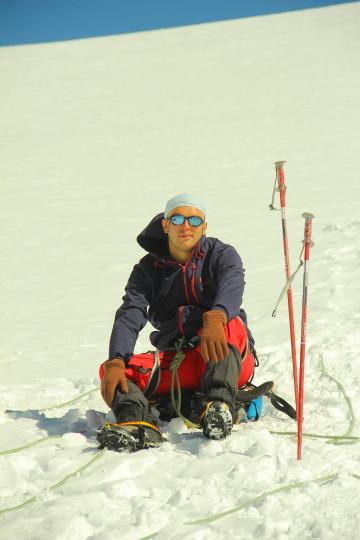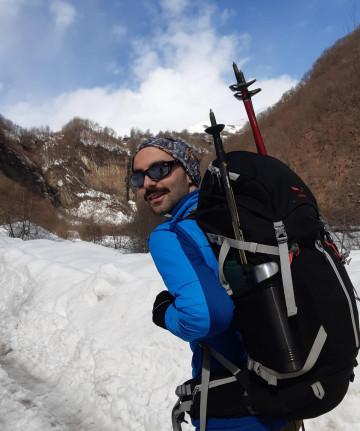
Park Hotel Surami Chalet
If you are looking for a place for a healthy vacation near Tbilisi, you should definitely come to Su...
Tskhinvali region covers the territory of historical Samachablo and with the current administrative division. It is part of the Shida Kartli and Mtskheta-Mtianeti. It is mentioned as the Tskhinvali region, as well as Samachablo. Today, the entire territory of the region is controlled by the Russian occupation army. During the Upper Paleolithic period the territory of the Tskhinvali region was still inhabited by Pre-Kartvelian speaking tribes. Kartvelian tribes also inhabited the region during the Bronze Age and the Iron Age, as evidenced by numerous archaeological discoveries. In the IV-III centuries BC the Kingdom of Kartli, or Iberia, was founded in southern and eastern Georgia, and Tskhinvali was part of Kartli as well. According to the collection of ancient Georgian historical works - "The Life of Kings", at the time the Tskhinvali region was inhabited by Georgian ethnos as before. In the early Middle Ages, these territories were still part of the Kingdom of Kartli. At the beginning of the X century a military administrative unit - Kartli Saeristavo - was established on the territory of Shida Kartli, which became a military administrative unit of the united Georgian state together with the Tskhinvali region in the beginning of the XI century. In the late Middle Ages, the mass exodus of Ossetians living in the North Caucasus to the South Caucasus gradually began. A sharp increase in the population of Ossetia disrupted the historically established ethno-demographic balance in the Tskhinvali region and it led to the alienation and confrontation of the Georgian and Ossetian population, which was often accompanied by armed clashes. In a report to the imperial court during his stay in Georgia in 1802, General Karl Knorring called the highlands of the Tskhinvali region Ossetia, where the Ossetian population dominated, and the rest territories, mostly inhabited by Georgians, he called Georgia. In 1830, the newspaper “Tifliskie vedomosti” published an anonymous author's article in which he used the terms "South Ossetia" and "North Ossetia". After this article, the name "South Ossetia" gradually gained a foothold. On March 26, 1921, after the occupation of Georgia, the South Ossetian revolution committee was formed. The final legalization of these terms took place in 1922-24, when the "South Ossetian Autonomous Region" was established and after 2 years- North Ossetian ASSR. On December 11, 1990, the Supreme Council of the Republic of Georgia adopted the law on “the abolition of the South Ossetian autonomous oblast”. In the same year, the separatist forces declared independence under the name "South Ossetian Democratic Soviet Republic", followed by a military confrontation between the central government of Georgia and forces of the South Ossetian autonomous oblast. On June 24, 1992 Georgia and Russia signed an agreement in Dagomys according to which Russian military units in the Tskhinvali region received status of "peacekeeping mission". As a result of the agreement, three, Georgian, Russian and Ossetian peacekeeping battalions were deployed in the conflict zone and a joint commission was established, which included Georgia, Russia, South Ossetia and North Ossetia. After the 2008 war, Georgia left the Joint Commission, withdrew from the CIS and officially called the presence of Russian troops in the Tskhinvali region occupation.
Tskhinvali region is a part of Shida Kartli and Mtskheta-Mtianeti regions. It is located on the southern slopes of the Central Caucasus Range. Its administrative center is the city of Tskhinvali. The region is bordered by Kazbegi and Dusheti municipalities to the east, by Kaspi, Gori, Kareli and Khashuri municipalities to the south, by Sachkhere and Oni municipalities to the west, and by Alania- North Ossetian Republic of the Russian Federation to the north. In the Tskhinvali region is located the city of Tskhinvali, 4 Daba- Akhalgori, Kornisi, Kvaisa, Java and about 300 villages. The region is characterized by highland and medium height relief. The main river systems in these areas are created by the following rivers: Didi Liakhvi, Patara Liakhvi, Ksani, Mejuda, Lekhura, Prone and others. About half of the Tskhinvali territory is occupied by forest massifs and the rest by alpine and subalpine meadows. In the extreme southern plains we also find the steppe covered in thorn undergrowth. Keli lake is located at the highest place in Georgia (2914 m), which is located in Tskhinvali. A variety of flora and fauna are common in the region. In the forests live: wild goats, deer, roes, bears,chamois, rabbits, wolves, foxes and many others. The ornitofauna consists of Caucasian snowcock, Caucasian grouses, jays, goshawks, woodpeckers, quails, corvus, true thrushes and others. The climate in Tskhinvali is moderately humid, with moderately cold winters and long, warm summers. The average annual air temperature is 9.6 ° C in January - -1.6 ° C, and in July - 20.3 ° C. As the altitude increases, the temperature decreases and the average annual temperature on the volcanic ridge is -5 ° C - -6. C.
Tskhinvali is famous for its diverse nature and abundance of cultural and historical monuments. Forests, valleys, peaks, volcanic mountains and alpine lakes create a beautiful and amazing environment for travel and nature lovers. One of the most distinctive places is the Keli lake, which is located on the volcanic plateau of Keli. The lake is located at the highest place in Georgia. The colorful volcanic mountains and the blue water create a beautiful view and make an unforgettable impression on the visitor. There are local balneological resorts (Java, Kanchaveti) in the region, where you can have a nice rest. Due to its ancient history, many interesting historical monuments have survived in Tskhinvali. Here you will find monuments of different periods, started from the Stone Age to the late Middle Ages. Kudaro and Tsona Caves, St. George’s Church of Tlia, Jvari Church of Kvaisi, Edisa Church, Keshelta Church, numerous castle-towers and many other temples and fortresses will take you back to the rich historical past and leave a great impression. The archaeological and cultural monuments of Tskhinvali occupy an important place in the cultural heritage of Georgia, most of which, unfortunately, are in serious condition. There is a historical museum in Tskhinvali, where many interesting and important exhibits are stored.
Keli Lake
Cultural Monuments
St. George’s Church of Tlia
Jvari Church of Kvaisi
Edisa Church
Keshelta Church
Zghubiri Church
Keshelta Castle
Tlia Castle
Java
Kanchaveti
Our guides are ready to help you on this trip



Buy our tours online and explore incredible Georgia!

If you are looking for a place for a healthy vacation near Tbilisi, you should definitely come to Su...

Help other travelers use your experience.
Review this destination, share your thoughts, impressions, pros and cons.
Let's make traveling easier than ever.
Please login to ask a question
Ask a Question